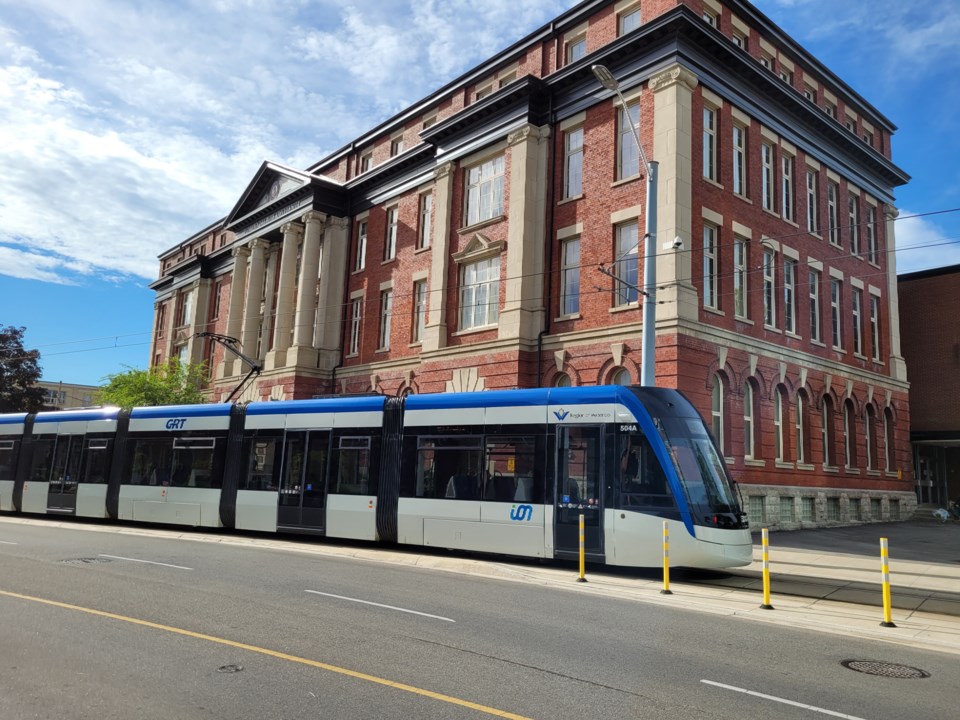The region wants to spend $100,000 to reassess the south terminus point of the proposed LRT route through Cambridge after new information came to light that may point to an Ainslie Street terminal as the better option.
A report coming to next week's planning and public works meeting says staff have reconsidered the 2018 choice to build the south terminus on Bruce Street based on experience operating the LRT in Kitchener and Waterloo with a goal to provide the best value to the public while minimizing unnecessary costs and impacts.
The report says staff now recognize the Bruce Street track geometry has operational drawbacks that are better understood after several years operating Stage 1 ION.
The latest Bruce Street terminal station design also resulted in "significantly increased property impacts" that would be lessened at another location.
The main impact would be to 63 Water St. S., which would need to be demolished to accommodate the terminal station.
While not on the city's heritage registry, the converted early 1900s residence features some unique architecture and was home to a Jewish congregation, B’Nai Israel between 1950 and 1983.
In addition, staff says it now recognizes the potential value of additional secure train storage for a disabled train at the south terminus and needs to reassess the space available to provide that option.
All three original alternative locations would be considered in a reevaluation, including Ainslie Terminal, Bruce and Concession Street.
A change to the south terminus location, if preferred, will require that the region prepare an addendum to the Environmental Project Report, the report states.
As part of its work to build a business case to access provincial and federal funding for Stage 2 of the ION, the region is also working on an an official plan review to accommodate the region’s forecasted growth to 2051.
It will allocate growth to each area municipality, and delineate the boundaries of the Stage 1 and 2 ION Major Transit Station Areas (MTSA) in the ROP.
The report says the review will also "identify the minimum density targets for each MTSA, and outline the broad framework to achieve a diverse mix of land uses and support existing and planned transit service levels."
The 2051 population and employment data are expected to be available in early to mid 2023.
That work, as well as money to cover the reassessment of the south terminus location, is covered in the region’s approved 2022-2031 Rapid Transit Capital Program budget of $1.9 million in 2022.
To date, staff says the region has spent $338,600 towards that budget, and anticipates spending a total of $939,800 by year end.



